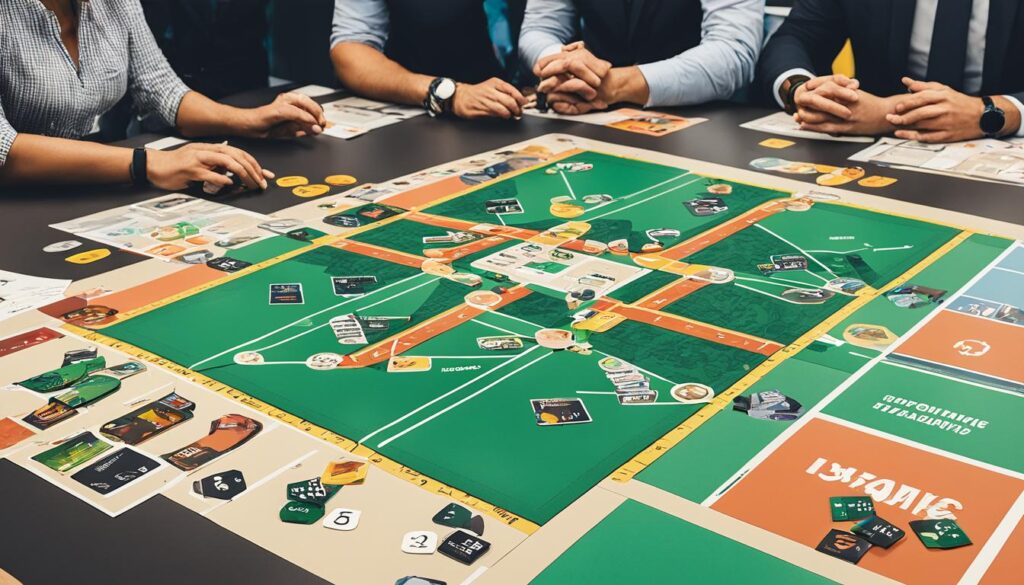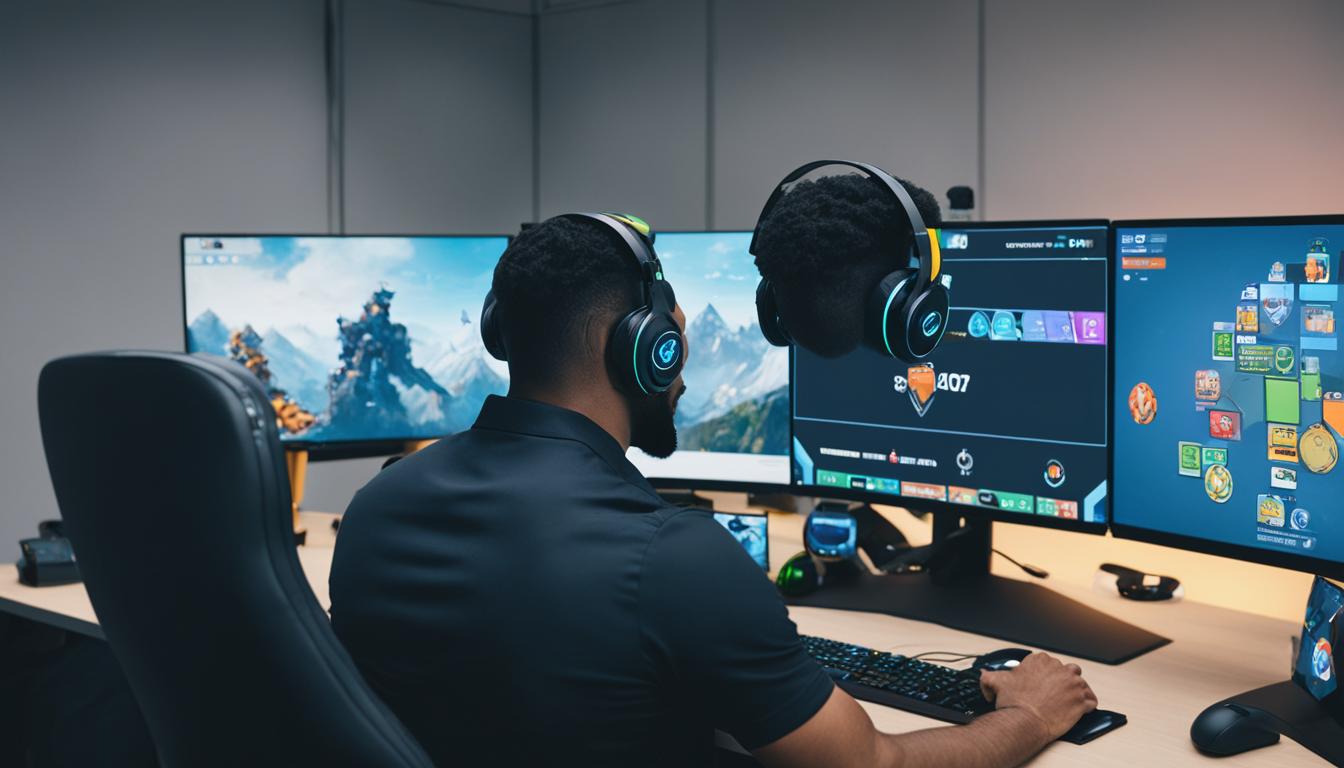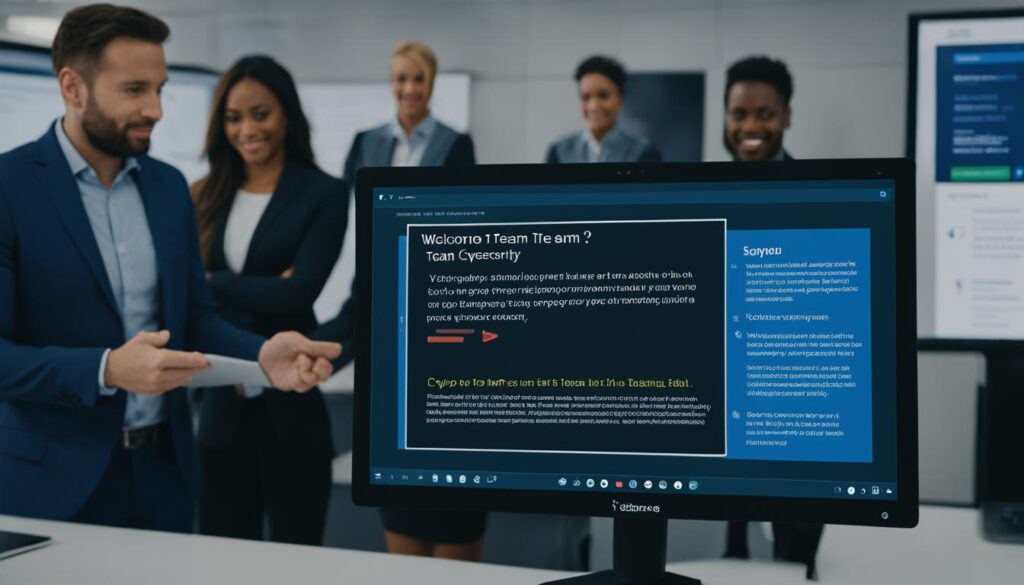Employee onboarding is a crucial process for companies to ensure that new hires feel welcomed and supported in their transition. However, traditional onboarding methods can often be boring and lack engagement, leading to decreased retention rates. Gamifying the onboarding experience can address these challenges by incorporating game mechanics and elements into the process. This article will provide a comprehensive guide on how to gamify employee onboarding, including the benefits and strategies involved.
Key Takeaways:
- Gamifying employee onboarding can increase engagement and motivation among new hires.
- By incorporating game elements, companies can create a more interactive and enjoyable onboarding experience.
- Gamification in employee onboarding can lead to higher retention rates and a quicker time to productivity.
- It creates a positive perception of the organization, showcasing its commitment to a fun and rewarding work environment.
- Gamification provides feedback opportunities for new hires to track their progress and identify areas for improvement.
The Importance of Gamification in Employee Onboarding
Employee onboarding is a critical stage for new hires to acclimate to their roles and the company culture. However, the traditional onboarding process can often be mundane and disengaging, resulting in lower retention rates. To address this, companies are turning to gamification to make the onboarding experience more interactive and enjoyable.
Gamifying the onboarding process can have significant benefits. By incorporating game mechanics and elements, companies can increase engagement and motivation among new hires. This, in turn, leads to higher retention rates and a stronger connection to the company.
So, why is gamification important in employee onboarding? Firstly, it creates a more interactive and enjoyable experience for new hires, making it easier for them to absorb information and feel connected to the company culture. Gamified onboarding techniques encourage active participation, allowing new hires to learn through hands-on activities and experiential learning.
Moreover, gamification promotes a sense of achievement and progress, as employees unlock levels, earn badges, and compete with colleagues. This fosters a positive and motivating environment that keeps new hires engaged and excited about their role within the company.
Engaging Employee Onboarding Techniques
Gamification offers various techniques to engage employees during the onboarding process. One effective technique is incorporating storytelling. By framing the onboarding experience as a narrative, employees can better connect with the information and understand how it relates to their role and the company’s goals. This technique creates a sense of purpose and helps employees to see the bigger picture.
Another technique is the use of collaboration mechanics. Encouraging new hires to work together on tasks and projects fosters teamwork and builds relationships among employees. Through collaboration, new hires can share knowledge, support each other, and begin forming connections within the company from day one.
Setting goals and challenges is another powerful gamification technique. By providing clear objectives and milestones, employees have something to strive for, which increases their motivation and engagement. Additionally, this technique promotes continuous learning and growth.
In conclusion, gamification plays a crucial role in employee onboarding by increasing engagement, motivation, and retention rates. By incorporating interactive elements, storytelling, collaboration mechanics, and goal-setting techniques, companies can transform the onboarding process into an engaging and meaningful experience for new hires.
The Benefits of Gamifying Employee Onboarding
Gamifying the employee onboarding process offers several advantages for both new hires and companies. By incorporating game mechanics and elements into the onboarding experience, companies can significantly improve the effectiveness and engagement of their new hire training programs.
One of the main benefits of gamification is its ability to increase new hire training engagement. Traditional onboarding methods can often be dull and monotonous, leading to decreased motivation and retention rates. However, by implementing gamification strategies, companies can make the onboarding process more exciting and interactive, encouraging employees to complete the necessary tasks and gain the knowledge required for their roles.
Additionally, gamification can help reduce turnover rates. Engaged employees who enjoy the onboarding experience are more likely to stay with the company in the long run. When new hires feel connected, motivated, and valued from the start, they are more inclined to develop a sense of loyalty and commitment to their new organization.
Another advantage of gamifying employee onboarding is its impact on time to productivity. Traditional onboarding methods can often take a significant amount of time for new hires to fully grasp their responsibilities and become productive members of the organization. However, by incorporating game elements and mechanics, companies can accelerate the learning process and enable new hires to quickly understand their roles and contribute effectively.
Besides improving engagement and accelerating productivity, gamification also helps create a positive perception of the organization. By showcasing a commitment to a fun and rewarding work environment, companies can attract top talent and position themselves as desirable employers. This positive reputation not only enhances the employee onboarding experience but also contributes to long-term employee satisfaction and retention.
Furthermore, gamification provides valuable feedback opportunities for new hires. Through progress tracking, achievements, and performance metrics, employees can gain insights into their strengths and areas for improvement. This feedback-driven approach fosters continuous learning and professional growth, allowing new hires to refine their skills and become valuable contributors to the organization.

In summary, gamifying the employee onboarding process yields multiple benefits for both new hires and companies. By improving engagement, reducing turnover rates, accelerating time to productivity, creating a positive perception, and providing valuable feedback opportunities, gamification enhances the overall onboarding experience. The next section will delve deeper into how onboarding gamification can be effectively implemented, providing strategies and techniques that can revolutionize the way companies onboard their new hires.
What is Onboarding Gamification?
Onboarding gamification is an innovative approach to employee onboarding that leverages game mechanics and elements to create an engaging and interactive experience. By incorporating gameplay into the onboarding process, companies can transform mundane tasks into exciting challenges, increasing employee motivation and knowledge retention.
Through onboarding gamification, companies tap into individuals’ natural inclination for gaming, turning the onboarding experience into a fun and rewarding journey. By introducing game elements such as points, leaderboards, badges, and rewards, new hires are incentivized to actively participate and complete tasks.
The objective of onboarding gamification is twofold: to enhance learning and to foster a sense of accomplishment. By implementing game mechanics, companies can facilitate knowledge acquisition by making information more digestible, memorable, and easily understandable. Moreover, the element of achievement and progression adds a sense of fulfillment and motivation for new hires as they navigate the onboarding process.
Implementing onboarding gamification requires careful planning and consideration. Companies need to identify the specific behaviors they want to encourage and the desired outcomes they want to achieve. This could include tasks such as completing training modules, interacting with fellow new hires or mentors, or familiarizing themselves with company policies.
The game mechanics used in onboarding gamification can be tailored to align with the company’s culture and values. For example, if collaboration and teamwork are highly valued, incorporating team challenges or cooperative gameplay can be effective. Alternatively, if individual achievement and recognition are prioritized, leaderboards and badges can be utilized to reward top performers.
By embracing onboarding gamification, companies can revolutionize the way they welcome and integrate new hires into their organizations. This engaging and interactive approach not only improves the onboarding experience but also enhances knowledge retention, motivation, and overall employee satisfaction.
How to Gamify the Onboarding Experience
Gamifying the onboarding experience can significantly enhance new hires’ engagement and retention. By integrating game elements and mechanics into the onboarding process, companies can create an enjoyable and interactive experience. Here are some practical strategies to gamify the onboarding process:
- Utilize storytelling: Incorporate storytelling techniques to create a connection between new hires and the company. Share anecdotes that highlight the organization’s values, culture, and success stories. This can help new hires feel more emotionally invested in their role within the company.
- Enable collaboration mechanics: Encourage new hires to work together and collaborate during the onboarding process. This can be achieved through group activities, team projects, or interactive training sessions. By fostering a sense of community and teamwork, new hires can build relationships and feel more connected to the company and their colleagues.
- Set goals and challenges: Define specific goals and challenges that new hires can strive to achieve. This can be in the form of milestones, targets, or even gamified assessments. By providing a clear roadmap and tracking progress, new hires feel a sense of accomplishment and motivation.
Gamifying the onboarding experience not only makes the process more enjoyable for new hires, but it also facilitates better knowledge retention and comprehension. By incorporating these strategies, companies can create a dynamic onboarding process that helps new hires effectively transition into their roles.

Real-Life Examples of Onboarding Gamification
To understand how to effectively gamify employee onboarding, it can be helpful to explore real-life examples from companies that have successfully implemented gamification strategies. These examples serve as inspiration for companies looking to incorporate gamification into their own onboarding processes.
One example is Microsoft, which implemented a gamified onboarding experience called “Minecraft Challenge.” New hires were tasked with completing Minecraft-inspired challenges related to the company’s values, culture, and products. By completing these challenges, employees gained a deeper understanding of Microsoft’s core principles while enjoying an interactive and engaging onboarding process.
Another notable example is Deloitte, a global professional services firm. Deloitte created a gamified learning platform called “Deloitte Pixel.” Through this platform, new hires were able to navigate a virtual city and complete various challenges that reflected different aspects of the company’s operations. The gamification elements, such as badges and leaderboards, fostered friendly competition among new hires, making the onboarding process more enjoyable and memorable.
Pinterest is yet another company that successfully gamified their onboarding process. They developed a game-like experience called “Pinterest Academy.” This online platform allowed new hires to explore different areas of the company, learn about Pinterest’s mission and values, and complete quizzes to test their knowledge. By gamifying the onboarding experience, Pinterest created a fun and immersive way for new employees to fully grasp the company’s culture and mission.
These real-life examples demonstrate the diverse ways in which companies have implemented gamification strategies to enhance the employee onboarding experience. By leveraging game elements like challenges, badges, and interactive platforms, organizations can create memorable and engaging onboarding programs that not only educate new hires but also instill a sense of excitement and connection to the company.
Overcoming Challenges in Onboarding Gamification
While gamifying the employee onboarding process brings numerous benefits, it also presents some challenges that companies need to address. Overcoming these challenges is crucial to ensure the successful implementation of gamification in the onboarding process.
1. Effective Storytelling
One of the challenges companies face when gamifying employee onboarding is the need for effective storytelling. Gamification is more than just incorporating game elements; it requires creating a compelling narrative that engages new hires and immerses them in the onboarding experience.
To address this challenge, companies can:
- Create a clear and captivating storyline that aligns with the company’s values and culture
- Use immersive techniques, such as character development and plot progression, to make the onboarding process more engaging
- Integrate the company’s mission and goals into the story to demonstrate its importance and relevance to new hires
2. Ensuring Engaging Interactive Elements
Another challenge is ensuring that the interactive elements incorporated in the gamified onboarding process are genuinely engaging for new hires. The interactive components should enhance the learning experience and motivate employees to actively participate.
To address this challenge, companies can:
- Regularly update and improve the interactive elements to maintain relevance and freshness
- Provide feedback and rewards for completing tasks or achieving milestones within the gamified onboarding process
- Encourage collaboration and social interaction among new hires through interactive activities and challenges
3. Balancing Intrinsic and Extrinsic Motivation
Striking a balance between intrinsic and extrinsic motivation is essential when gamifying the onboarding process. While extrinsic rewards, such as points and badges, can provide short-term motivation, it’s crucial to foster intrinsic motivation by making the onboarding experience inherently enjoyable and fulfilling.
To address this challenge, companies can:
- Create meaningful challenges and goals that align with new hires’ personal and professional growth
- Allow for autonomy and decision-making within the gamified onboarding process to increase intrinsic motivation
- Provide opportunities for new hires to showcase their skills and talents, boosting engagement and satisfaction
By addressing these challenges and implementing strategies to overcome them, companies can successfully gamify their employee onboarding process and reap the benefits of a more engaging and effective onboarding experience.
Conclusion
Gamifying employee onboarding can be a game-changer for companies, as it enhances engagement and boosts retention rates. By integrating game elements and mechanics into the onboarding process, companies can create an interactive and enjoyable experience that promotes learning and motivation. This article has provided a comprehensive guide on how to gamify employee onboarding, including the benefits, strategies, and challenges involved.
By implementing the best practices outlined in this guide, companies can elevate their onboarding process and set their new hires up for success. For effective employee onboarding through gamification, it is essential to prioritize engagement, interactivity, and goal-oriented challenges. Incorporating storytelling, collaboration mechanics, and feedback opportunities can further enhance the gamified onboarding experience.
Remember, gamification in employee onboarding not only helps new hires acclimate to their roles and the company culture but also showcases the organization’s commitment to a fun and rewarding work environment. By leveraging the power of gamification, companies can improve employee satisfaction, reduce turnover, and accelerate the time to productivity for new hires. So, why wait? Start implementing gamification strategies in your employee onboarding process and witness the transformative impact it can have on your organization.
FAQ
How can gamification improve employee onboarding?
Gamification can increase engagement and motivation, leading to higher retention rates. It creates an interactive and enjoyable onboarding experience, making it easier for new hires to absorb information and feel connected to the company.
What are the benefits of gamifying employee onboarding?
Gamification increases new hire training engagement, reduces turnover rates, reduces time to productivity, creates a positive perception of the organization, and provides feedback opportunities for new hires to track their progress.
What is onboarding gamification?
Onboarding gamification involves incorporating game mechanics and elements into the employee onboarding process to create an interactive and fun experience that helps new hires learn and retain information while fostering motivation and accomplishment.
How can the onboarding experience be gamified?
The onboarding experience can be gamified by using storytelling to build a connection, making the process interactive through collaboration mechanics, and setting goals and challenges for new hires to achieve.
Can you provide examples of onboarding gamification?
Yes, examples of onboarding gamification include leaderboards, badges, and challenges that companies have used to enhance the onboarding experience.
What challenges can arise when implementing gamification in employee onboarding?
Challenges may include the need for effective storytelling, ensuring interactive elements are engaging, and maintaining a balance between intrinsic and extrinsic motivation.




